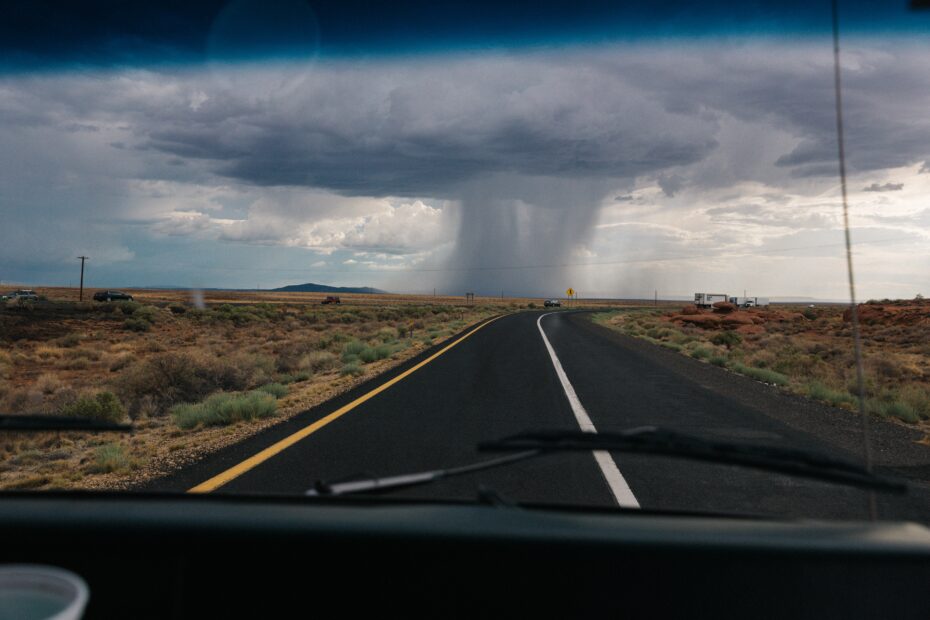Table of Contents
Tornadoes can happen at any time of the year and anywhere in the world. This said, tornadoes are far more likely to take place in the spring months and the vast majority of tornadoes occur in the United States. More preciously, the majority of tornadoes take place in tornado alley. This is an unofficial area of the United States which covers basically the area east of the Rocky Mountains and west of the Appellation Mountains.
The states with the highest risk of tornadoes include Texas, Oklahoma, Kansas, Missouri, Florida, Nebraska, Iowa and Illinois. The number of deaths attributed to tornadoes has dropped steadily over the past decades. Credit for this decline is given to better forecasting, better weather radar, and better early warnings systems.
States With The Most Killer Tornadoes
If you list the ten states with the most tornadoes it would different greatly from the top ten states with the most killer tornadoes. The top ten states with the most tornadoes, in order, are; Texas, Oklahoma, Florida, Kansas, Nebraska, Iowa, Missouri, Illinois, South Dakota, and Louisiana. Only four of these are listed in the top ten states with the most killer tornadoes. The top ten states with killer tornadoes;
- Texas
- Oklahoma
- Arkansas
- Alabama
- Mississippi
- Illinois
- Missouri
- Indiana
- Louisiana
- Tennessee
There are a number of reasons why certain states have a higher number of killer tornadoes. One theory is that the states such as Arkansas, Alabama, and Mississippi there are heavier forest, heavier precipitation, and many of the storms hit these areas after the sun has set. All of these combine to limit visibility and raise the danger level for people in their path.
Recent F5 Tornadoes
As far as tornadoes go, an EF5 tornado is as bad as it gets. These tornadoes are huge, can remain on the ground for prolonged periods of time, and are quite often fatal. Fortunately EF5 tornadoes are rare occurrences and only four have been recorded since 1998.
In 1998 Tennessee was hit by an EF5 which was 1760 feet wide and stayed on the ground for 69 miles. This storm resulted in 3 deaths, 36 injuries and caused $13 million in damages.
In 1999 Oklahoma experienced an EF5 which was 1430 feet wide and remained on the ground for 37 long miles. This storm killed 36 people and injured another 1430. The loss of life in this storm was amazing, but it also caused a reported $1 billion in property damage.
Kansas was hit by an EF5 in 2007 when a tornado which was an astonishing 3000 feet wide cut a path nearly 29 miles long through the state. When the sky cleared there were 11 people dead and 63 injured. The storm also resulted in $250 million in property damage.
The EF5 tornado hit in 2008 in the state of Iowa. The storm was reported to have been 2100 feet wide and traveled an amazing 41 miles on the ground. The result was 9 fatalities, 70 people injured and over $100 million in property damage.
Joplin, Missouri, on May 22, 2011, killing 158. An additional three to eight fatalities occurred indirectly as a result of the storm. This was the first tornado of any intensity to kill more than 100 people since the Flint, Michigan, twister of June 8, 1953, when 115 perished (another F5 event and the seventh-deadliest single tornado in U.S. history). Source
Months With The Most Tornadoes
Although tornadoes can happen any time of the year, certain months are far more likely to span tornadoes. Since 2008 the months with the most tornadoes are May with 967 tornadoes and June with 886 tornadoes. Combined, the months of April, May and June account for over 58 percent of all tornadoes.
The month of May came in second for the most tornado deaths with 56 deaths in the past three years. The month with the most tornado deaths over the past three years is February which had a total of 68 deaths reported. After these two months the highest number of tornado deaths was in the month of June which had 19 deaths and April with 17 deaths.
Fujita Scale Wind Speeds
The Fujita scale is actually intended to rate the damage of a tornado rather than the actual wind speeds, however each number on the scale has an associated wind speed. The original Fujita scale was replaced with the enhanced Fujita scale after data of storm damage was analyzed.
EF0 – 65 to 85 mph
EF1 – 86 to 110 mph
EF2 – 111 to 135 mph
EF3 – 136 to 165 mph
EF4 – 166 to 200 mph
EF5 – Over 200 mph
